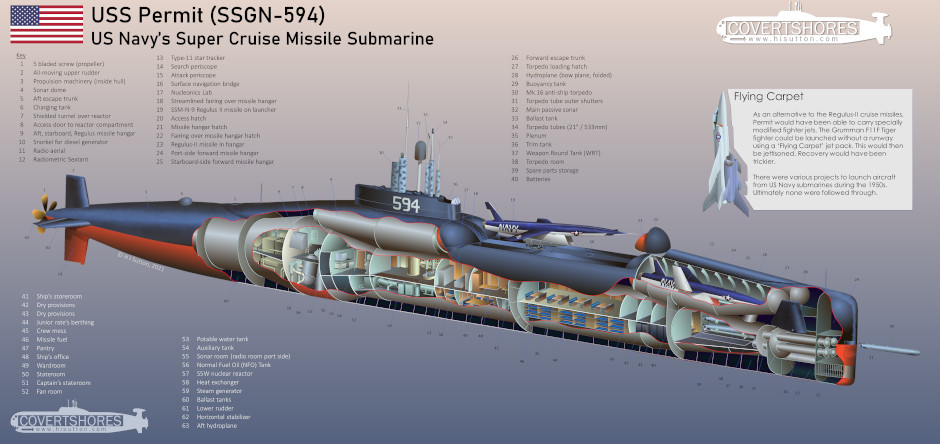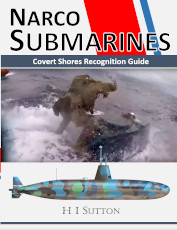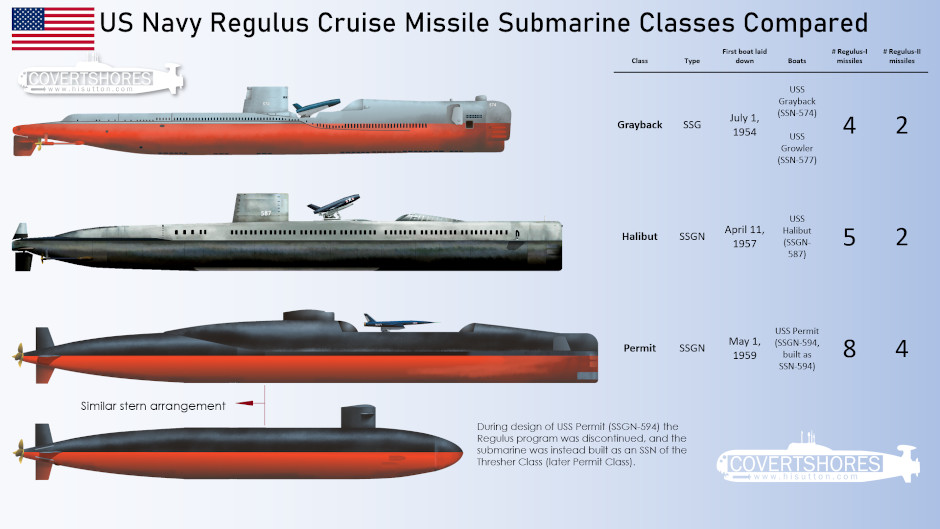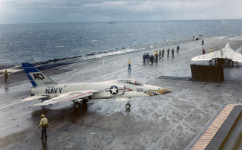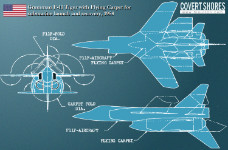US Navy's Super Cruise Missile Submarine: USS Permit's Original Design
CLICK to enlarge. Original artwork
US Navy’s Super Cruise Missile Submarine: USS Permit’s Original Design
 History remembers the USS Permit (SSN-594) as the name-ship of the Permit Class attack submarines. The Permits were the ultimate attack submarines of their time, introducing the now standard elongated teardrop hull form. They were the first class to have the famous spherical bow sonar and flank-mounted torpedo tubes. But there are a couple of major details which are less widely known.
History remembers the USS Permit (SSN-594) as the name-ship of the Permit Class attack submarines. The Permits were the ultimate attack submarines of their time, introducing the now standard elongated teardrop hull form. They were the first class to have the famous spherical bow sonar and flank-mounted torpedo tubes. But there are a couple of major details which are less widely known.
The first is that, despite giving her name to the class, the USS Permit was not the lead boat. Instead it was originally to be known as the Thresher Class. However, the tragic loss of the lead boat, USS Thresher (SSN-593) on April 10, 1963, led to the class being named after the second boat.
Secondly, the USS Permit was planned as an attack submarine at all. She was to be the latest and most capable in the US Navy’s nuclear-armed cruise missile submarines. This article will explore the original cruise missile focused design.
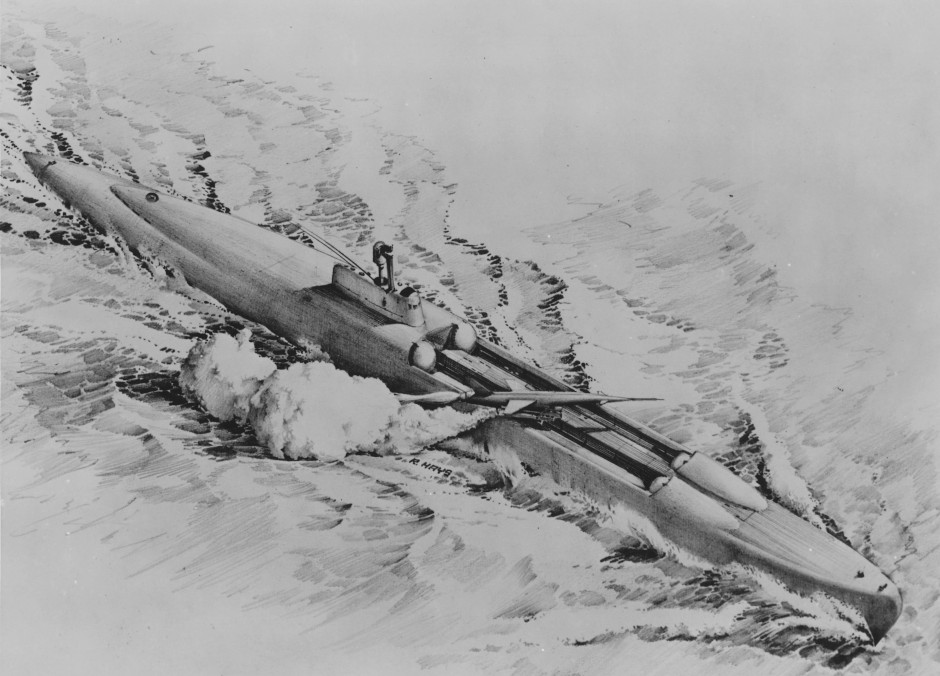
Concept aertwork from the time. US Navy
Regulus Cruise Missiles
In the early days of the Cold War, both the US and USSR rushed to establish at-sea nuclear deterrents. The US approach was two pronged, firstly to build nuclear-armed cruise missiles, and secondly to build ballistic missiles. For a time the cruise missile route seemed much more achievable and tests were conducted from fleet submarines. These were modified with a large hangar. The first cruise missiles were JB-2 Loon, the US copy of the German V-1 flying bomb. Some of these was launched from ramps on USS Cusk (SS-348) and USS Carbonero (SS-337) in the late 1940s.
Get The essential guide to World Submarines
This Covert Shores Recognition Guide Covers over 80 classes of submarines including all types currently in service with World Navies.
Check it out on Amazon
But the Loon was only for testing and they were replaced by a US designed SSM-N-8 Regulus-I cruise missile in the early 1950s. This massive missile resembled a small jet fighter. It had range of 500 nautical miles and delivered a 2 megaton M27 nuclear bomb.
Regulus-I was only an interim solution. The much more capable SSM-N-9 Regulus-II was to be the backbone of the at-sea nuclear deterrent. This was a Mach 2 (compared to the subsonic Regulus-I) weapon with a 1,000 nautical mile range. So about twice the speed, twice the range. It was however larger so fewer could be carried.
CLICK to enlarge
The basic concept of operations was similar for both the Regulus missiles. The missiles themselves would be carried aboard submarines in sealed hangars which protected them from the sea. The submarine would have to surface before the hangars could be opened and the missile rolled out. It would be attached to a launcher where last minute guidance details would be uploaded. These were informed by the SINS (ships inertial navigation system). This had to be the most accurate type available as the missile’s ultimate accuracy depended on knowing exactly where it was launched from. Once fired the missile could take some external inputs via radio control, or rely on its internal guidance.
The World’s ONLY Guide to
Narco Submarines
10 years of research, analyzing over 160 incidents, condensed into a handy guide. This unique book systematically breaks down the types and families. With detailed taxonomy, recognition 3-views, profiles and photos. Available on Amazon
US Navy Cruise Missile submarines
Regulus-I was operational from 1955, but in practice it needed submarines which could carry it close enough to the enemy. During development this could be done from modified fleet submarines but there was a need for dedicated boats. The first purpose-built submarines were two Grayback class boats. Derived from the Tang Class fleet submarines, they featured two large hangars above the bow. The hatches opened aft so that the missiles could be drawn out towards the sail, before being fired over the forward quarters. Initially four Regulus-I missiles could be carried, two in each hangar.
Even before the first Grayback Class boat was launched, the keel had been laid on a nuclear-powered follow-on. The sole Halibut Class boat, USS Halibut (SSGN-587) was larger than the Graybacks and featured a single large hangar. This could carry 5 Regulus-I missiles.
CLICK to enlarge. Original artwork
As the Regulus program was taking shape several submarine design alternatives were considered. Some of these appear to have been heavily influenced by the Imperial Japanese Navy’s famous I-400 class submarine. Like other Japanese cruiser submarines this had two pressure hulls joined together down the center to make one larger one. The I-400 had a tubular aircraft hangar on its deck, with a side-mounted sail. At least one US Navy design proposal emulated this. Ultimately the USS Halibut would have a large slanted hangar buried in the forward half of the submarine. All hints of the I-400 were forgotten.
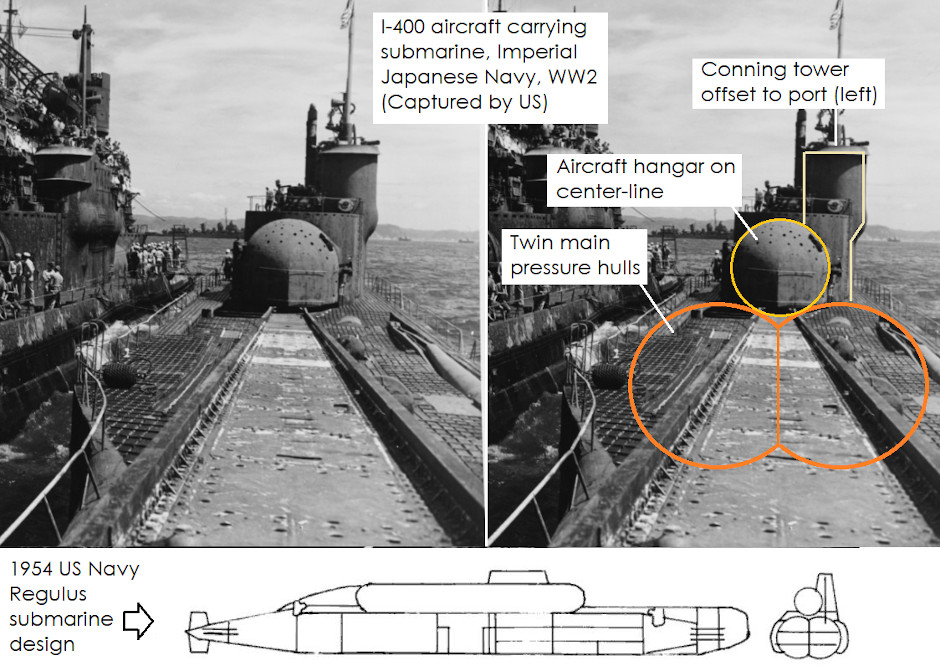
USS Permit, The Super Cruise Missile submarine
The USS Halibut was a one-off design. Although lorded as a super-submarine for a brief time, it was quickly overtaken by newer designs. It’s twin-screw arrangement was falling out of favor in the US Navy thanks to the impressive performance of the USS Albacore. And its reactor, the S3W, was quickly being superseded by the S5W. These were being mated to sleek single-screw sterns like Albacore’s. The next nuclear-powered cruise missile submarine (SSGN), USS Permit (SSGN-594), would marry a single-screw stern to a Halibut-like forward hull. The sharp vertical bow was likely necessary (vs the rounded bow of new attack submarines) because the submarine had to be stable on the surface. And the deck needed to be as dry as possible to allow the launch of the missiles.
Some improvements were made over Halibut’s weapons stowage arrangement however. Instead a single large hangar, Permit would revert to smaller separate hangars, like on the Graybacks. But there would be four instead of two. This allowed more missiles to be carried, and also likely made the boat more survivable if one of the hangars was flooded.
There were some compromises however. The torpedo room was relatively small. It could only carry 8 torpedoes. I am not sure if it is 8 total, or 8 + 4 in the tubes. Either way, it was a very small torpedo load-out. Added to this, thanks to the streamlined single-screw stern there was no stern torpedo room as on Halibut and the Graybacks.
USS Permit (SSGN-594) Specifications
Length: 372.8 feet (113.60 m)
Beam: 36 feet 4 inches (11.05 m)
Displacement: 4,470 tons (light); 4,800 tons (surfaced); 6,770 tons (submerged)
Speed: 17.5 knots (surfaced), 16 knots (submerged)
Test depth: 1,300 feet (400 meters)
Reactor: 1 x S5W type
Weapons: 4 x hangars for Regulus II cruise missiles, 4 x 533mm (21”) torpedo tubes plus 4-8 reloads
Crew: 10 officers and 88 enlisted
Flying Carpet: fighter planes instead of missiles
The SSGNs should be viewed as missile launching platforms, but another compatible idea was being developed at the same time. If a submarine could launch an aircraft-sized cruise missile, it could launch a missile-sized aircraft. An arrangement was devised which would fit a Grumman F11F Tiger jet inside a Regulus hangar.
The F11F was a mid-50s supersonic carrier borne fighter. Although its service life was relatively short, it wasn’t considered a bad aircraft, just not as good as the Vought Crusader. It was much more compact however, small enough to fit inside a Regulus hangar. The F11F Tigers would be launched with the assistance of a ‘flying carpet’ jet pack attached to the belly. This detachable booster phase which would fall away once the aircraft was airborne and could be recovered for reuse. The aircraft itself would be recovered by, somehow, hovering vertically on its tail and being met by a recovery frame.
####
Grumman F-11F Tiger, F-11F with Flying Carpet
The F11F proposal was only intended as a demonstrator. Instead much more ambitious purpose-designed aircraft were proposed. Perhaps not surprisingly the idea never caught on, but it is an interesting ‘what-if?’. And the active SSGNs were not expected to be switched to the aircraft role. There were much more ambitious submarine aircraft carriers proposed, and other novel aircraft. See the AN-1 submarine aircraft carrier design.
Fate
By the time that the SSGN-594, USS Permit was laid down May 1959 the Navy was already building 5 ballistic missile submarines (SSBNs). The two projects had run in parallel for a time. At one point a fleet of 12 cruise missile submarines were planned, in addition to 40+ ballistic missile boats.
Initially the cruise missile program had been the preferred option. But that soon changed and the cruise missile concept quickly faded into the background. The US Navy had overcome two major challenges to build usable ballistic missiles: a) the physical challenges of carrying ballistic missiles on submarines, b) the ability to launch from a submerged submarine.
The first SSBN, USS George Washington (SSBN-598) was launched in June 1959, barely a month after Permit had been laid down. The first generation Polaris submarine launched ballistic missile had a range of 1,400 nautical miles. This was nearly three times that of the Regulus-I and 1.4 times that of the Regulus II. And the range of the Polaris would be improved further.
On December 18 1959 the Regulus missile was cancelled in favor of Polaris. Primarily it was for budgetary reasons, but the superiority of the submerged-launch missile was also clear. Permit was not cancelled and scrapped however.
The ultimate book of Special Forces subs Covert Shores 2nd Edition is the ONLY world history of naval Special Forces, their missions and their specialist vehicles. SEALs, SBS, COMSUBIN, Sh-13, Spetsnaz, Kampfschwimmers, Commando Hubert, 4RR and many more.
Check it out on Amazon
Instead she got a new lease of life as a Thresher Class attack submarine. Her name and number were retained, but the overall design was completely different. The USS Permit (SSN-594 - note SSN, instead of SSGN) was laid down just 5 months after Regulus was cancelled. Later of course she became the name boat of her class. But history could have been very different.
Correction: This article previously stated that Permit was laid down as the SSGN and then switched to an SSN. This is incorrect. The switch took place before she was laid down.
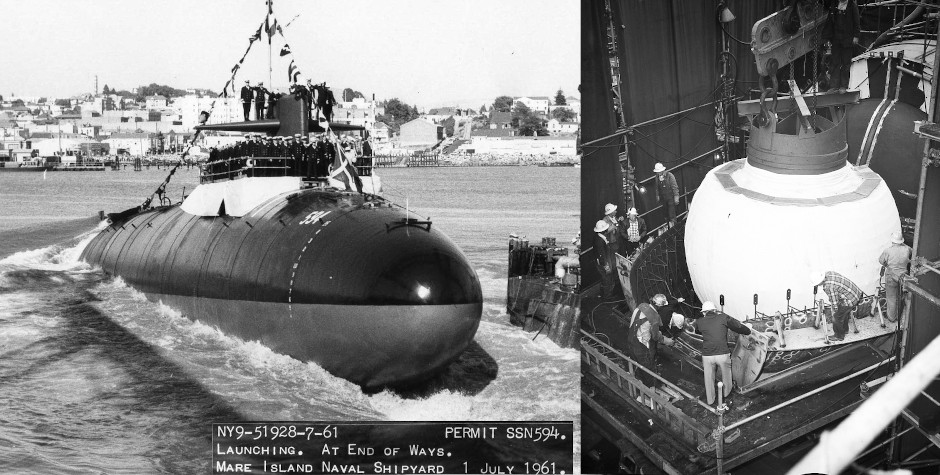
The USS Permit’s rounded bow contained a large sonar array (right, note that it is covered to hide the details from prying eyes)
The attack submarine front was much shorter and featured the now ubiquitous streamlined bow. The whole bow was taken up by a massive spherical sonar array, a feature which would define US Navy attack submarines for the rest of the Cold War. Permit of course would later become well known as the name ship of her class. But possibly, her original cruise missile build would have been more interesting. And other cruise missile subs, USS Halibut and USS Grayback, went on to have impressive second careers. Their hangars could be reused for special missions. So, what if? …
Related articles (Full index of popular Covert Shores articles)

 World’s First Nuclear Submarine, USS Nautilus w/Cutaway
World’s First Nuclear Submarine, USS Nautilus w/Cutaway

 AN-1 submarine aircraft carrier
AN-1 submarine aircraft carrier

 Sturgeon Class SSN. w/Cutaway
Sturgeon Class SSN. w/Cutaway

 USS Grayback Special Forces host submarine
USS Grayback Special Forces host submarine

 Barbel Class - the last front-line diesel boats int the US Navy
Barbel Class - the last front-line diesel boats int the US Navy

 USS Halibut. w/Cutaway
USS Halibut. w/Cutaway


